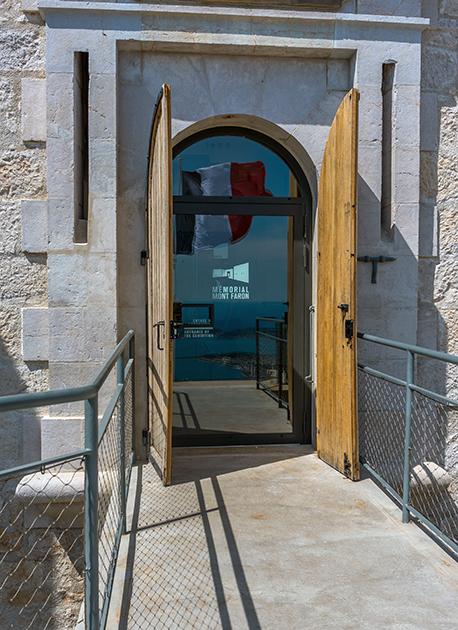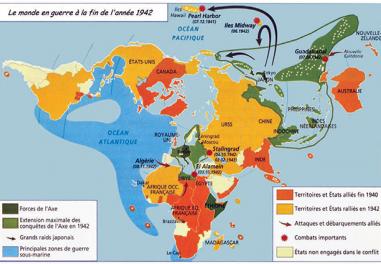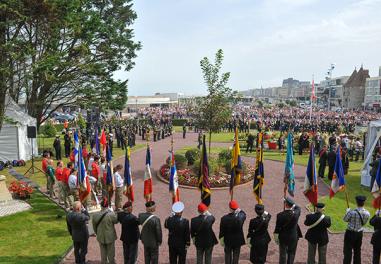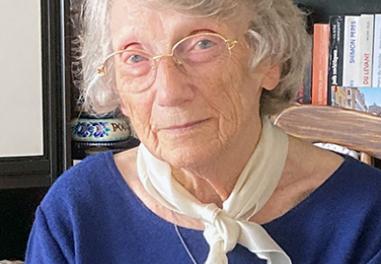Memorial to the Landings and Liberation of Provence
A Major National Remembrance Site of the Ministry of the Armed Forces, the Memorial to the Landings and Liberation of Provence bears witness to the history of the Second World War. The episodes that took place in the Mediterranean in 1942 will be at the heart of its cultural programme this year.

Officially unveiled on 15 August 1964 by Charles de Gaulle, who in doing so sought to emphasise France’s contribution to its own liberation, while also stressing its links with the newly independent African nations, the Mémorial du débarquement et de la libération de Provence is a site managed and promoted by the National Office for Veterans and Victims of War (ONAC-VG), an executive agency of the French Ministry of the Armed Forces. As well as offering exceptional panoramic views of the coast and the mountains of the Toulon hinterland, it presents a collection of period objects and audio and video testimonies over 600 m² of exhibition space, giving visitors the opportunity to relive the key moments of the Provence landings, a crucial stage in the liberation of France. After the rallying of part of France’s colonial empire to General de Gaulle in 1940, the liberation of North Africa by Operation Torch in November 1942, followed by Corsica in 1943, the Normandy and Provence landings constituted the two jaws of a vice that was to drive the German army from French soil in 1944.
Following the completion of major renovation work carried out between 2015 and 2017, the Memorial has become an accessible and interactive interpretation centre aimed at young people, the general public and veterans. The new spaces offer a fresh new historical and educational insight, with a chronological display that begins two years before the landings of 15 August 1944 and, room by room, brings visitors closer to D-Day. The role of all those involved comes under the spotlight – whether British, American or French soldiers, of European or African origin, civilians or members of the Resistance. A film shown on a 17-metre screen presents footage from the night of 14-15 August 1944 to the liberation of Toulon and Marseille. In addition, outreach activities are offered to all visitors: guided tours, themed visits, learning activities and workshops, activity booklets, etc. Officially reopened on 16 March 2017, the renovated Memorial receives 30 000 visitors per year and pursues its vocation to pass on the history of the landings.
For the 80th anniversary of 1942, a decisive year in the war, the Memorial is actively involved. It will be laying on a rich and varied cultural programme linked to the events that took place in the South of France and, more broadly, across the Mediterranean. A conference cycle will present the Battle of Bir Hakeim, the Anglo-American invasion of Morocco and Algeria (Operation Torch), the invasion of the southern zone by Axis forces in November, and the escape of the French submarine Casabianca from the port of Toulon. The conferences will be given by well-known historians like Jean-Marie Guillon, emeritus professor and chair of the Memorial’s scientific committee. In the second half of the year, a temporary exhibition on the Casabianca will chart the history of its crew, its epic escape and its missions to support the Resistance in Corsica and Provence. Visiting the Memorial also offers an opportunity to visit Toulon harbour, ten miles away, to discover the exact place where the French fleet scuttled many of its vessels, in November 1942, to prevent them from falling into the hands of the enemy. In the summer, the cultural events calendar will include a jazz concert and an open-air cinema.
Articles of the review
-
The file

1942: a turning-point?
If Japanese victory in the Far East and the advance of German troops into the Soviet Union made 1942 a difficult year for the Allies, it was also one of hope, with the German defeat at Stalingrad and the Allied landings in North Africa. In France, popular support for Vichy waned, as the Resistance o...Read more -
The event

80 years after 1942
Read more -
The interview

Isabelle Zdroui
On 16 July 1942, Isabelle Zdroui escaped the Vel d’Hiv roundup. After escaping from the family home, she was hidden in a number of different children’s homes until the end of the war. Today aged 90, she continues to tell her story.
Read more

